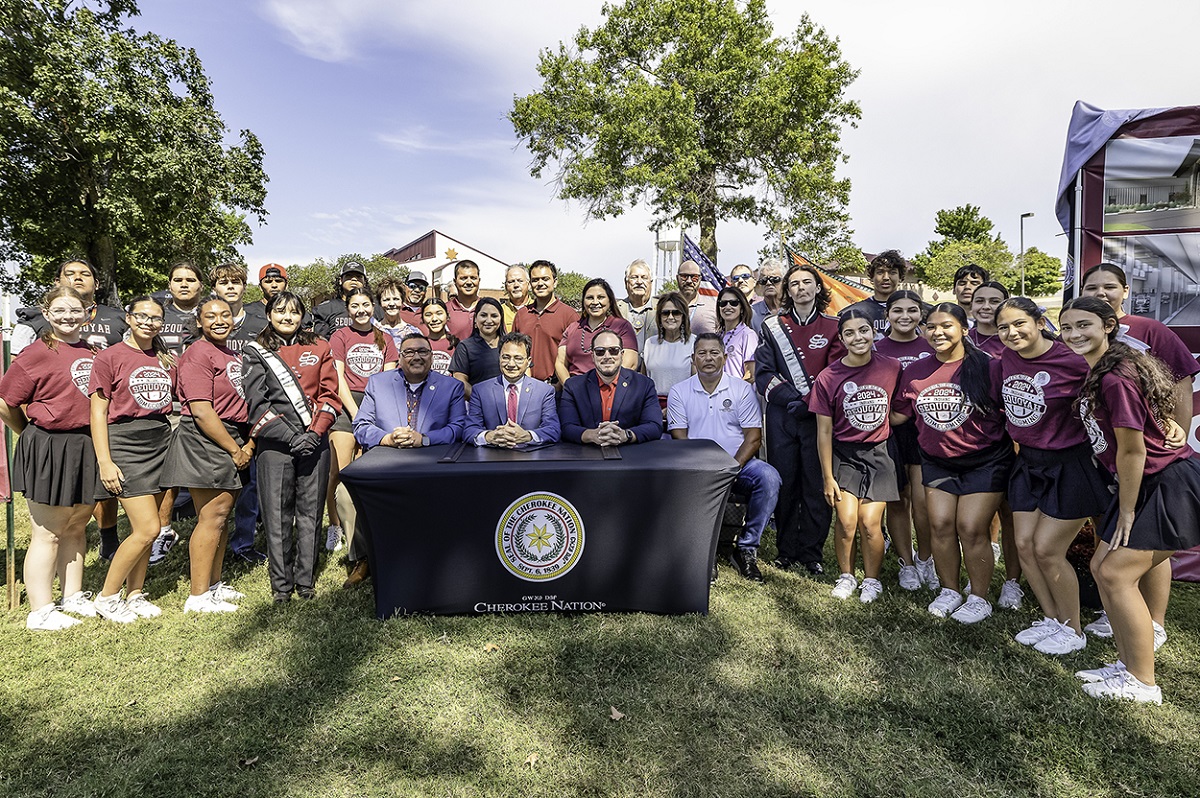
- Details
- By Chuck Hoskin Jr
Guest Opinion. Throughout history, Cherokee Nation leaders have placed a premium on intellect and resourcefulness. This legacy has empowered our people to rise from adversity and emerge stronger. Even as we faced severe persecution leading up to the Trail of Tears, Cherokees learned to read and write at levels higher than our non-Indian neighbors. We used literacy and education to preserve our culture and advocate for ourselves in the law and public opinion.
Misguided groups once upon a time weaponized education to erode our culture, but our resilience triumphed over the trauma of boarding schools. Now we have reclaimed education as a tool for empowerment. Our scholarships and educational investments are directly linked to Cherokee Nation’s past growth and future success. Education remains key to ensuring Cherokee children grow into prosperous, successful leaders.
Recently, the Cherokee Nation approved its largest-ever investment in education, with the Council of the Cherokee Nation unanimously endorsing the Sequoyah Schools Capital Plan. This $65 million investment will create a first-class campus that reflects the excellence of Sequoyah Schools’ faculty, staff, administrators and students.
The capital plan, which Deputy Chief Bryan Warner and I brought before the Council, includes remodeling dormitories and constructing a new multipurpose facility, auditorium and academic building. These enhancements, along with recent investments in a new football field and campus security, will further cement education as a core value for generations of Cherokee students.
Sequoyah Schools has a rich history dating back to 1871 when the Cherokee Nation opened an orphan asylum after the Civil War. Though sold to the U.S. Department of the Interior in the early 1900s, the institution shifted toward education. In 1985, Cherokee Nation regained operation of the schools, reinvigorating them with a focus on language immersion and cultural preservation.

Today, Sequoyah Schools proudly enrolls over 400 students from across the country, representing dozens of tribes. The school system stands as one of our tribe’s most significant accomplishments, a testament to our curiosity about who we are and where our priorities lie.
The Sequoyah Schools Capital Plan is part of the Cherokee Nation's Respond, Recover, and Rebuild Plan — a $1 billion framework utilized since 2020 for pandemic response and recovery. This investment in education joins major capital projects across the Nation, including health care, housing, language preservation, parks, first-response capacity and government service facilities.
There is no greater aspiration than building a stronger, healthier world for the next generation. These investments reflect who we are and what we value. I thank the Council and Deputy Chief Warner for their partnership in this transformative endeavor.
Chuck Hoskin, Jr. is the principal chief of the Cherokee Nation.
More Stories Like This
Extending the Affordable Care Act Is a Moral Imperative for Indian CountryAll Is Fair in … War?
Why Federal Health Insurance Policy Matters to Cherokee Nation
The Absence of October's Job Report Shows Why Native American Communities Need Better Data
Tribal IDs Are Federally Recognized. ICE Agents Are Ignoring Them.
Help us defend tribal sovereignty.
At Native News Online, our mission is rooted in telling the stories that strengthen sovereignty and uplift Indigenous voices — not just at year’s end, but every single day.
Because of your generosity last year, we were able to keep our reporters on the ground in tribal communities, at national gatherings and in the halls of Congress — covering the issues that matter most to Indian Country: sovereignty, culture, education, health and economic opportunity.
That support sustained us through a tough year in 2025. Now, as we look to the year ahead, we need your help right now to ensure warrior journalism remains strong — reporting that defends tribal sovereignty, amplifies Native truth, and holds power accountable.
 The stakes couldn't be higher. Your support keeps Native voices heard, Native stories told and Native sovereignty defended.
The stakes couldn't be higher. Your support keeps Native voices heard, Native stories told and Native sovereignty defended.
Stand with Warrior Journalism today.
Levi Rickert (Potawatomi), Editor & Publisher

